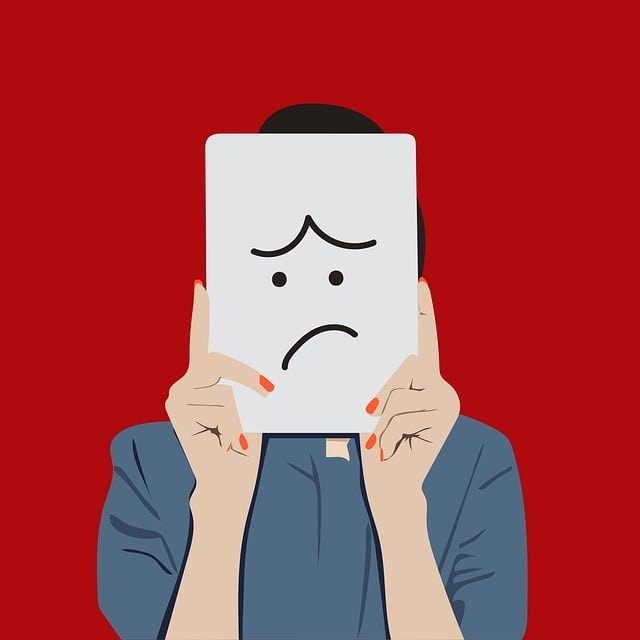Navigating BPD Dating: Essential Tips for Compassionate Relationships
Dating someone with borderline personality disorder (BPD) can be a deeply emotional experience filled with both challenges and rewards. Understanding the nuances of this mental health condition and its impact on romantic relationships is key to fostering a compassionate and fulfilling connection. In this guide, we will explore practical strategies for building a healthy relationship with someone with BPD, while also prioritizing self-care and emotional stability.
Understanding Borderline Personality Disorder
Defining Borderline Personality Disorder
Borderline personality disorder is a mental health condition characterized by emotional instability, impulsive behaviors, and unstable relationships. Borderline personality disorder is part of a group of mental health conditions known as personality disorders, which significantly impact personal relationships and emotional regulation. It affects about 1.6% of adults in the United States, often emerging in early adulthood. People with BPD experience intense emotions, chronic feelings of emptiness, and an unstable sense of self.
Understanding BPD is critical for navigating romantic relationships with a BPD partner. It lays the foundation for developing communication skills, empathy, and the ability to manage emotional pain effectively.
Common Symptoms and Behaviors
People with BPD tend to exhibit behaviors and symptoms that significantly impact their relationships. These include:
Emotional instability: Mood swings that can escalate quickly and dramatically.
Fear of abandonment: Frantic efforts to avoid rejection, often leading to clinginess or self-harming behaviors.
Impulsive behaviors: Reckless driving, binge eating, or substance use, resulting in negative consequences.
Unstable emotions and self-image: Chronic self-doubt and feelings of emptiness.
These symptoms are common among various personality disorders, but they are particularly pronounced in individuals with BPD.
Recognizing these common symptoms is vital for understanding your BPD partner’s experiences and creating a fulfilling relationship.
The Impact of BPD on Romantic Relationships
Emotional Turmoil and Confusion
A BPD relationship often involves emotional turmoil due to intense emotions and unpredictable behavior. Romantic partners may feel overwhelmed by their partner’s mood swings and impulsive actions, leading to emotional pain and anxiety. Building a healthy relationship requires patience, empathy, and a strong commitment to open communication. Emotional turmoil is a common challenge in relationships affected by personality disorders, including BPD.
The Cycle of Idealization and Devaluation
BPD symptoms often include cycles of idealization and devaluation. During the idealization phase, people with BPD may view their romantic partners as perfect, creating a “honeymoon phase.” However, this can shift to devaluation, where criticism and rejection dominate. Understanding this cycle is essential for managing emotional stability in the relationship. This cycle is often observed in various personality disorders, but it is particularly intense in individuals with BPD.
Building a Healthy Relationship with Your BPD Partner
Be Supportive and Offer Validation
Offering consistent emotional support can make a significant difference in your BPD partner’s well-being. Validation helps them feel understood and secure. Encourage them to seek mental health treatment, such as dialectical behavior therapy (DBT), which is highly effective for managing BPD symptoms. Support and validation are crucial in relationships affected by personality disorders, including BPD, to help manage emotional instability.
Encourage Accountability and Responsibility
Support your partner in developing a sense of accountability for their actions and emotions. This includes:
Setting clear boundaries.
Encouraging self-reflection and growth.
Promoting healthy coping mechanisms like mindfulness and journaling.
Encouraging accountability and responsibility is essential in managing the behaviors associated with personality disorders, including BPD.
Practice Mindfulness and Self-Compassion
Mindfulness is a powerful tool for managing emotional turmoil in BPD relationships. It helps you stay grounded and respond to challenges with clarity. Additionally, self-compassion allows you to prioritize your emotional well-being, avoiding burnout or resentment. Mindfulness and self-compassion are effective strategies for managing the emotional challenges associated with personality disorders, including BPD.
Creating a Supportive Environment for Your Partner
Creating a supportive environment for your partner with borderline personality disorder (BPD) is crucial for maintaining a healthy relationship. By understanding and accommodating their needs, you can help reduce their emotional pain and promote a more stable and loving partnership.
Understanding and Accommodating Their Needs
Individuals with BPD often struggle with intense emotions, mood swings, and an unstable sense of self. To create a supportive environment, it’s essential to understand and accommodate their needs. Here are some tips:
Validate their emotions: People with BPD often feel like their emotions are not validated or understood. By acknowledging and accepting their feelings, you can help them feel more secure and less likely to engage in destructive behaviors.
Establish a daily routine: A daily routine can provide a sense of structure and stability, which can be comforting for individuals with BPD. Encourage your partner to establish a daily routine that includes time for self-care, therapy, and relaxation.
Encourage self-care: Self-care is essential for individuals with BPD. Encourage your partner to engage in activities that promote relaxation and stress reduction, such as yoga, meditation, or deep breathing exercises.
Provide emotional support: Individuals with BPD often struggle with emotional regulation. Provide emotional support by being present, listening actively, and offering words of encouragement.
By understanding and accommodating your partner’s needs, you can create a nurturing environment that fosters emotional stability and strengthens your relationship.
Encouraging Treatment and Therapy
Encouraging your partner to seek treatment and therapy is crucial for managing BPD symptoms and promoting a healthy relationship. Here are some tips:
Dialectical behavior therapy (DBT): DBT is a type of therapy that is specifically designed for individuals with BPD. It can help your partner develop coping mechanisms, regulate their emotions, and improve their relationships.
Mental health treatment: Mental health treatment can help your partner manage their symptoms and develop a more stable sense of self. Encourage your partner to seek treatment from a mental health professional who specializes in BPD.
Support groups: Support groups can provide a sense of community and connection for individuals with BPD. Encourage your partner to join a support group to connect with others who understand their struggles.
By creating a supportive environment and encouraging treatment and therapy, you can help your partner with BPD manage their symptoms and promote a healthy and loving relationship.
Managing Intense Emotions in BPD Relationships
Fear of Abandonment and Instability
Fear of abandonment is a hallmark of borderline personality disorder. This intense fear often leads to behaviors like excessive reassurance-seeking or angry outbursts. Encourage your partner to address these fears through therapy and to build emotional regulation skills. Fear of abandonment is a common issue in relationships affected by personality disorders, including BPD.
Detaching With Love and Setting Boundaries
Maintaining your own emotional stability requires healthy boundaries. Detaching with love means supporting your partner while protecting your well-being. Clearly defined expectations and open communication are key to balancing empathy with self-care. Detaching with love and setting boundaries are essential strategies in managing relationships affected by personality disorders, including BPD.
The Importance of Therapy in BPD Relationships
Mentalization-Based Therapy and Medications
Mental health treatments like mentalization-based therapy (MBT) and dialectical behavior therapy (DBT) help people with BPD better understand their thoughts and emotions. In some cases, medications such as antidepressants or mood stabilizers may be prescribed to manage symptoms. These treatments are effective in managing the symptoms of various personality disorders, including BPD.
Couples Counseling and Individual Therapy
Couples counseling helps both partners develop communication skills and resolve conflicts effectively. Individual therapy allows your BPD partner to address self-esteem issues, emotional instability, and past traumas. Seeking professional help fosters growth and understanding for both parties. Couples counseling and individual therapy are effective in managing the relational dynamics associated with personality disorders, including BPD.
Recognizing Trauma and Its Effects on Relationships
Signs of Emotional Trauma and Long-Term Effects
Trauma often underlies borderline personality disorder. Signs of trauma can include emotional instability, chronic feelings of emptiness, and difficulty forming healthy relationships. Addressing these issues through therapy is crucial for long-term healing. These signs are common in individuals with personality disorders, including BPD.
Establishing Boundaries and Prioritizing Self-Care
Clear boundaries protect your emotional well-being while enabling your partner to develop accountability. Self-care practices, such as exercise, meditation, and spending time with loved ones, help you maintain emotional stability. Establishing boundaries and prioritizing self-care are essential strategies in managing relationships affected by personality disorders, including BPD.
Self-Care Strategies for Healing and Growth
Mindfulness, Self-Compassion, and Emotional Regulation
Mindfulness and emotional regulation techniques, like deep breathing or grounding exercises, can help you manage the emotional challenges of a BPD relationship. Self-compassion allows you to stay resilient and focused on personal growth. Mindfulness, self-compassion, and emotional regulation are effective strategies for managing the emotional challenges associated with personality disorders, including BPD.
Building a Support Network and Seeking Professional Help
A support network of family, friends, or a therapist can provide guidance and encouragement. Seeking professional help, such as couples therapy, enhances relationship dynamics and promotes healing for both partners. Building a support network and seeking professional help are crucial in managing the relational dynamics associated with personality disorders, including BPD.
Navigating Breakups and Relationship Endings
Coping with Emotional Turmoil and Confusion
Breakups in BPD relationships are often emotionally intense. Prioritize self-care and seek therapy to process your feelings. Healthy coping mechanisms, like journaling and mindfulness, can ease the transition. Coping with emotional turmoil is a common challenge in relationships affected by personality disorders, including BPD.
Overcoming Challenges and Building Resilience
Developing Emotional Intelligence and Regulation
Emotional intelligence is essential for navigating the ups and downs of a BPD relationship. Practice self-awareness, empathy, and communication to strengthen your connection. Developing emotional intelligence and regulation are effective strategies for managing the emotional challenges associated with personality disorders, including BPD.
Embracing the Complexity of BPD Relationships
Relationships with someone with BPD can be challenging, but they also offer opportunities for growth and connection. By prioritizing communication, empathy, and self-care, you can navigate these challenges with compassion and resilience. Embracing the complexity of BPD relationships requires a deep understanding of personality disorders and their impact on emotional and relational dynamics.
Conclusion: Maintaining a Compassionate and Healthy Relationship
Navigating a relationship with someone with borderline personality disorder requires understanding, patience, and mutual effort. By supporting your BPD partner’s healing process and prioritizing your emotional well-being, you can create a relationship rooted in trust, empathy, and growth. Maintaining a compassionate and healthy relationship with a BPD partner requires a deep understanding of personality disorders and their impact on emotional and relational dynamics.
FAQ's
A person with borderline personality disorder (BPD) often experiences intense emotions, which can lead to mood swings and emotional instability in relationships. They may fear abandonment, leading to behaviors like excessive reassurance-seeking or clinginess. On the other hand, they can alternate between idealizing their partner and feeling disappointed or critical during conflicts. This cycle, known as idealization and devaluation, can make relationships challenging. However, with effective communication, mutual understanding, and mental health treatment, these relationships can be rewarding and fulfilling.
People with BPD often seek partners who can provide emotional stability, understanding, and validation. They value strong connections and may be drawn to individuals who offer consistent support and empathy. However, the intense nature of their emotions may also cause them to idealize their partners early in the relationship. Building a healthy dynamic requires setting clear boundaries, promoting open communication, and encouraging self-reflection for both partners.
Untreated BPD can manifest as intense fear of abandonment, impulsive behaviors, and difficulty maintaining stable relationships. These challenges often stem from emotional instability and an unstable sense of self. In relationships, untreated BPD may lead to frequent conflicts, emotional pain, and miscommunication. Encouraging a BPD partner to seek therapy, such as dialectical behavior therapy (DBT), and supporting their healing process can significantly improve relationship dynamics.
Building a healthy relationship with a BPD partner involves empathy, patience, and open communication. Here are some key strategies:
- Support mental health treatment: Encourage your partner to seek therapy, such as DBT or couples counseling, to manage symptoms and develop coping mechanisms.
- Set clear boundaries: Boundaries help protect both partners’ emotional well-being and promote accountability.
- Practice self-care: Prioritize your own physical and emotional health to avoid burnout.
- Foster understanding: Educate yourself about BPD to better understand your partner’s experiences and behaviors.
With mutual effort and support, it’s possible to create a stable and fulfilling relationship.







